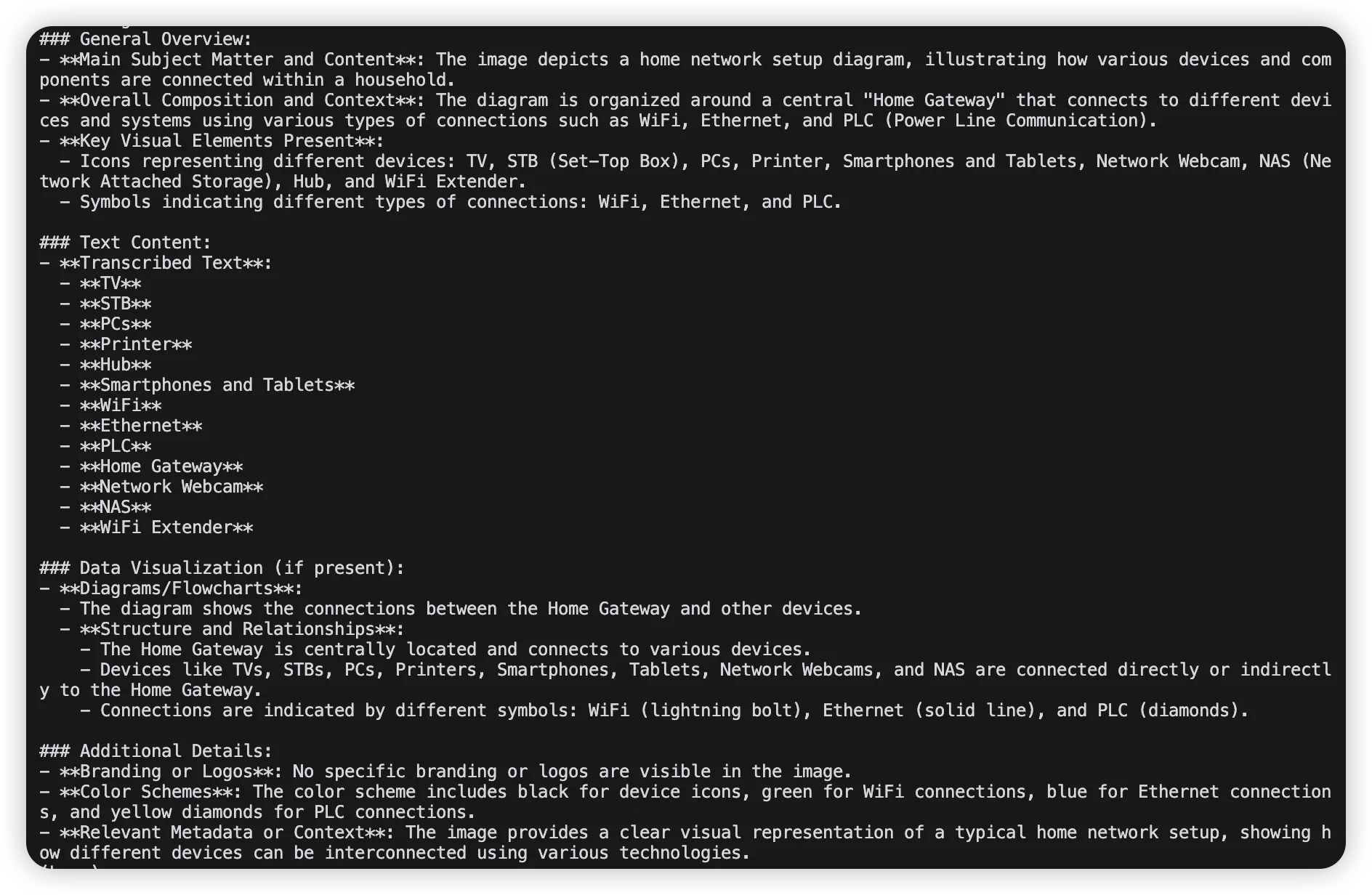A Dead Simple Way to VLM Parsing
/ 4 min read
Table of Contents
This post demonstrates a straightforward approach to using VLMs for parsing unstructured data from images. While simple, this method can be easily extended to handle more complex scenarios, such as extracting information from PDFs. If you want, you can built a more complex parser as llamaparse with more steps, like OCR, table parsing, etc.
Let’s consider a common scenario: you have a collection of images and need to extract text from them. Or perhaps you want to generate descriptions from pictures to enable full-text search capabilities. It’s time to hire a VLM (Visual Language Models or MultiModal Models) to work for you.
Since I work extensively with llama-index, I’ll be using it in the examples. However, the core concepts remain the same, and you can adapt them to work with any tools or clients of your choice.
Show Me The Code
At first, we need to define a prompt for the VLM to follow, to help it understand what we need.
BASIC_PROMPT = """ Please analyze this image comprehensively and provide the following information:
1. General Overview: - Main subject matter and content - Overall composition and context - Key visual elements present
2. Text Content: - Transcribe any visible text accurately - Include headers, labels, and captions - Note any important text formatting or emphasis
3. Data Visualization (if present): - For tables: * Convert to markdown format * Preserve column headers and data relationships - For charts/graphs: * Describe the type of visualization * Explain key trends and patterns * List important data points and values - For diagrams/flowcharts: * Explain the structure and relationships * Describe the flow or process * Note any important symbols or annotations
4. Additional Details: - Identify any branding or logos - Note color schemes if significant - Describe any relevant metadata or context
Please format the response clearly and maintain the original structure of any data. """Let’s build a minimal but functional image parser:
from pathlib import Pathfrom typing import Listimport base64from io import BytesIOfrom PIL import Imagefrom llama_index.core.multi_modal_llms import MultiModalLLMfrom llama_index.core.multi_modal_llms.generic_utils import ImageDocument
class SimpleImageParser: def __init__(self, model: MultiModalLLM): self.model = model self.prompt = BASIC_PROMPT
"""A simple parser for extracting information from images using VLMs.
Args: model (MultiModalLLM): The multi-modal language model to use for parsing """
def process_image(self, image_path: str) -> str: """Convert image to base64 encoding""" image = Image.open(image_path) buffered = BytesIO() image.save(buffered, format="PNG") return base64.b64encode(buffered.getvalue()).decode("utf-8")
async def parse(self, image_path: str) -> str: """Parse image content""" image_data = self.process_image(image_path) image_doc = ImageDocument( image_url=f"data:image/jpeg;base64,{image_data}" ) response = await self.model.acomplete( prompt=self.prompt, image_documents=[image_doc] ) return str(response)The core is, we convert the image to base64 encoding, and then pass it to the VLM.
Taking It for a Spin
Here’s how to use our shiny new parser:
import asyncioimport osimport argparsefrom pathlib import Pathfrom llama_index.multi_modal_llms.openai import OpenAIMultiModalfrom dotenv import load_dotenv
load_dotenv()
async def main(): parser = argparse.ArgumentParser(description="Parse image content") parser.add_argument("image_path", type=str, help="Path to the image file") args = parser.parse_args()
image_path = Path(args.image_path) if not image_path.exists(): print(f"Image file does not exist: {image_path}") return
# Initialize the VLM model = OpenAIMultiModal( model=os.getenv("MULTI_MODAL_LLM_MODEL", "gpt-4o-mini"), api_key=os.getenv("MULTI_MODAL_LLM_API_KEY"), api_base=os.getenv("MULTI_MODAL_LLM_API_BASE", "https://api.openai.com/v1"), max_new_tokens=int(os.getenv("MULTI_MODAL_LLM_MAX_TOKENS", "512")), temperature=float(os.getenv("MULTI_MODAL_LLM_TEMPERATURE", "0.7")), verbose=os.getenv("MULTI_MODAL_LLM_VERBOSE", "False").lower() == "true", )
# Create our parser parser = SimpleImageParser(model) # Let's parse an image! result = await parser.parse(str(image_path)) print(result)
if __name__ == "__main__": asyncio.run(main())In this snippet, we initialize the VLM, create our parser, and then parse an image.
Running the Demo
I have a repo for a demo of using VLM to parse images, you can see the code here.
Just run the script with the image path:
python basic.py <image_path>The example image is a screenshot of a home gateway, from Home gateway example:

And the result in terminal is:

Bonus: Extending the Parser
Here are some practical ways to extend this simple parser:
-
Format Support
- Handle PDFs using tools like
pdf2image - Process videos using
opencv-pythonfor frame extraction
- Handle PDFs using tools like
-
Output Options
- Generate JSON output:
async def parse_to_json(self, image_path: str) -> dict:result = await self.parse(image_path)# Add your JSON transformation logic herereturn json_result
- Create custom templates using Jinja2 or similar
- Generate JSON output:
-
Processing Pipeline
- Integrate Tesseract OCR for text extraction
- Try to support table parsing
- Implement batch processing with asyncio
-
Integration Ideas
- Connect with llama-index for RAG applications
- Build automated workflows
Resources
Thanks for reading! If you have any questions or suggestions, please feel free to leave a comment.